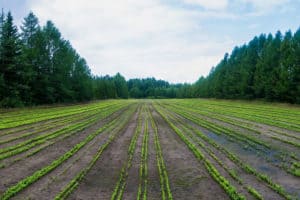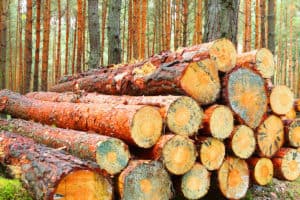I spent Saturday rubbing my own nose in my own farm failures. Regular abrasion sessions of this sort have kept my nose small and orderly over the years. Unlike my ears.
Farming often proceeds only when the farmer’s hopes triumph over his well-reasoned projections of marginal failure. We plant each spring, come what may.
Twenty-five years ago, I fenced off an acre of bottom land in the back pasture and planted 75 black walnut seedlings.
The Latin name for black walnut is Juglans nigra, which I never learned in four years of high school Latin because I was a crummy student. I recall a little about Julius Caesar and the boys who invaded Gaul, which was divided into three parts — the Ringo, the Pinto and the Middle Kingdom. I think I still have this right.
Juglans refers to the favored nut of the Roman god, Jupiter—the kind he snacked on. Jupiter is often sculpted with nary a thong, let alone a toga, which may be the origin of the expression, “By Jove!”
A few centuries ago, pharmacologists were turning walnuts into medicine for brain diseases because the nuts looked like brains. You see the logic here: Eating a walnut helped your brain; eating a salami helped your…appendix.
I chose my acre shrewdly, because hope has to be packaged with cold logic to get the mojo working.
One huge, perfect native walnut stood on the crease where a steep slope joined the bottom. The open, level acre would get sun. The standing tree proved that walnuts loved this dirt.
My walnut acre lay between the slope on the west and Key Run on the east. This “intermittent waterway,” which only the U.S. Corps of Engineers would consider navigable, is drier than the Sahara ten months a year. It might be navigated with a dune buggy.
No neighbor had ever seen Key Run above its banks.
Each of the 20-inch-tall seedlings I purchased from the Commonwealth of Virginia had a tap root about five inches long. They came with a written warning that each tree should be planted in a hole at least 10-feet wide and 30-feet deep, otherwise the Commonwealth would curse my laziness and nothing would grow except cankers.
While complying with these instructions, I discovered that Key Run’s bottom yielded a fine crop of rocks, the size and visage of Easter Island totems. I spent days erecting them to scare Jupiter away from my walnuts.
When I finished, my back no longer straightened and my sanity had locked up around hole 35. Still, 75 spindly seedlings stuck up from the ground, each shrewdly protected from rabbits by a white plastic sleeve. I crawled home, sustained by the hope that a yet-to-be-conceived heir would cut these trees in 2060, grow rich and think kindly of my shrewdness.
That first summer the seedlings put out little leaves. The next spring, the stems grew taller. On November 5, 1985, a 100-year flood covered the bottom to a depth of five feet for more than a day. Two other such floods visited during the next decade.
After the third drowning, a neighbor suggested that I should have planted the walnuts on the slope rather than in the bottom. Farmers appreciate 20-20 hindsight more than others, because we have so much experience in having it shared with us.
Some seedlings expired in place while others washed down the Potomac River and into the Chesapeake Bay where opportunistic craftpersons thinking globally and acting locally turned them into high-end chopsticks.
About 50 survived, but they were beat up. I couldn’t look at them for years without wincing. I gave them benign neglect.
Despite this abuse, they put on girth and height. All, however, bore wounds and disfigurements. Their butt stems were limby, with crotches that Martha Stewart would cluck at.
Before they leafed out this year, I decided to try to salvage hope from the teeth of reality. I would prune the wolf limbs and decide how to eliminate the crotches.
Trees are weak where main stems divide and major limbs branch off. Removing the weaker or smaller limb at a crotch would strengthen the main stem, assuming the tree survived the amputation. Dare I hope that radical surgery would produce a figured pattern that would end up on television like Andy Rooney’s desk?
One part of my ever-shrewd brain said I was simply chasing a lost dream. Time devoted to these ragamuffins might be better spent thinking more shrewd thoughts and smoking a mid-price cigar. But then hope reared its seductive head: Give them a shot, it said, come what may.
As I whacked branches right and left, I noticed several dozen seedlings and saplings that had emerged over the years, thanks to the faulty memories of resident squirrels, none of whose brains seem to have been improved by dining on Jupiter’s nuts.
I tied each of these with a snazzy orange plastic ribbon and praised their brave-but-probably-doomed entrepreneurial spirits. I also confessed that I could not defend them against enemies, both foreign and domestic. I believe in speaking truth to little walnut trees.
When all the ribbons and sleeves were in place, my walnut acre looked like a cemetery on Mardi Gras.
Am I better person for having failed? No, I am not. My character remains unimproved.
Many of us fail repeatedly in different ways, sometimes maddeningly in the same way.
Farms provide endless opportunities to try again. Trying builds character; success does not.
Next time I will plant my nuts on a hill and shrewdly reserve my bottom for free-range rocks.
This content may not be used or reproduced in any manner whatsoever, in part or in whole, without written permission of LANDTHINK. Use of this content without permission is a violation of federal copyright law. The articles, posts, comments, opinions and information provided by LANDTHINK are for informational and research purposes only and DOES NOT substitute or coincide with the advice of an attorney, accountant, real estate broker or any other licensed real estate professional. LANDTHINK strongly advises visitors and readers to seek their own professional guidance and advice related to buying, investing in or selling real estate.









That is some out of the box thinking! This has a variety of applications and is thought provoking as most of your writing is…Thanks!